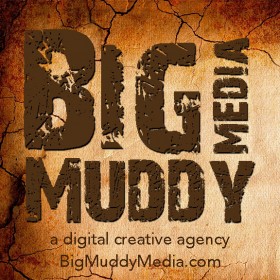 After all of the grueling, dramatic months we’ve endured leading up to this point, Election Day is officially over. Yesterday, millions of people fulfilled their patriotic duty and made their voices be heard in voting for our next president.
After all of the grueling, dramatic months we’ve endured leading up to this point, Election Day is officially over. Yesterday, millions of people fulfilled their patriotic duty and made their voices be heard in voting for our next president.
No one can deny that this race was a historic one, and rightly so, for plenty of reasons. Political affiliations aside, there is one thing that will go down as a huge factor in American politics in 2016: Social Media.
In elections past, people could argue that newspaper was a huge vehicle for informing and persuading voters. As technology advanced, we tuned into the radio. Soon after, TV changed the political landscape with news reporting, debates, and commercials. Now, in the most recent years, social media has become a live, up-to-the-minute news source, creative advertising platform, and “town hall” meeting place of opinions and discussion.
Social media experts have been touting the concept that social media is the quickest, most efficient way to reach an audience. Why? Because of the sheer amount of people engaged on platforms like Facebook, Twitter, Instagram, Snapchat, etc.
While most businesses understand this, many politicians are noticing too. Even more, the teams behind these platforms utilized their power to inspire voters to get engaged and get out to vote on Election Day.
Here’s a closer look at the power social media has had in our political process and the implications for future elections.
A Live, Up-To-The Minute News Source
It seemed like every day in this election season a new breaking story was released, everything from email investigations to Access Hollywood tapes. The  major platforms surely fought to be THE place to go for breaking stories with Facebook Live and trending topics, Snapchat Discover, and trending hashtags and news on Twitter. On these platforms, voters can view updates and opinions from a wide variety of sources, thought leaders, and the candidates themselves.
major platforms surely fought to be THE place to go for breaking stories with Facebook Live and trending topics, Snapchat Discover, and trending hashtags and news on Twitter. On these platforms, voters can view updates and opinions from a wide variety of sources, thought leaders, and the candidates themselves.
About 25% of adults report turning to each of the candidates’ social media pages for election updates. This is compared to the 15% of voters who turned to the candidates’ email blasts or websites. One reason for this, as we’ve mentioned before, is that social media provides a two-way form of communication.
Voters can “react” to statements on Facebook, comment their opinions, and favorite and retweet tweets. Compared to newspaper, radio, and TV, the everyday American voter can truly make their voices be heard on social media.
A Crucial Advertising Platform
Sure, you’ve probably seen all of the political sponsored posts on Facebook and the promoted posts on Twitter. But did you know that some of the oldest running members of the Senate ran Snapchat Ads and filters to engage with younger voters this election? The entire concept of advertising in such a way during an election is unprecedented in American politics. Even PACs were spending advertising dollars on social media to inspire voter turnout in crucial swing states leading up to Nov. 8.
In upcoming elections, social media will no doubt be a key place for candidates and PACs to advertise. With the amount of users engaged on these platforms, the shareable nature of the posts, and the dialogue it inspires, it’s a no-brainer to allocate advertising dollars to social media.
A Gathering Place for Discussion
This component of social media in the election cycle is one that anyone with a Facebook account can attest to. In days past, people would gather in  person to discuss politics, and much still do. However, social media users can connect and discuss their opinions with not just their friends, family, and neighbors, but literally anyone willing to listen.
person to discuss politics, and much still do. However, social media users can connect and discuss their opinions with not just their friends, family, and neighbors, but literally anyone willing to listen.
From live-tweeting debates, responding to the latest breaking news, or sharing “I Voted” stickers, the American people are truly engaged with the social aspect of politics. Whether this has given you a headache or not, the platforms have done their part in encouraging people to be interested in politics and voice their opinion on #ElectionDay.
In future elections, the major social media platforms (and any new ones that arise) will fight to be the ultimate place for political discussion. Even more, we can expect any singular moment or event during the election cycle to cause a “ripple effect” in social media conversation.
Finally, the biggest implication of all is that a candidate must accept and place value in social media for their campaign to say alive. Whether they have the savvy to go it alone, or they have a robust social media team behind them, it is almost a requirement in American politics.
Eleni Hampton | Twitter: @eleni_gabriella | Instagram: @elenihampton | eleni@harnessdigitalmarketing.com






Leave a Reply